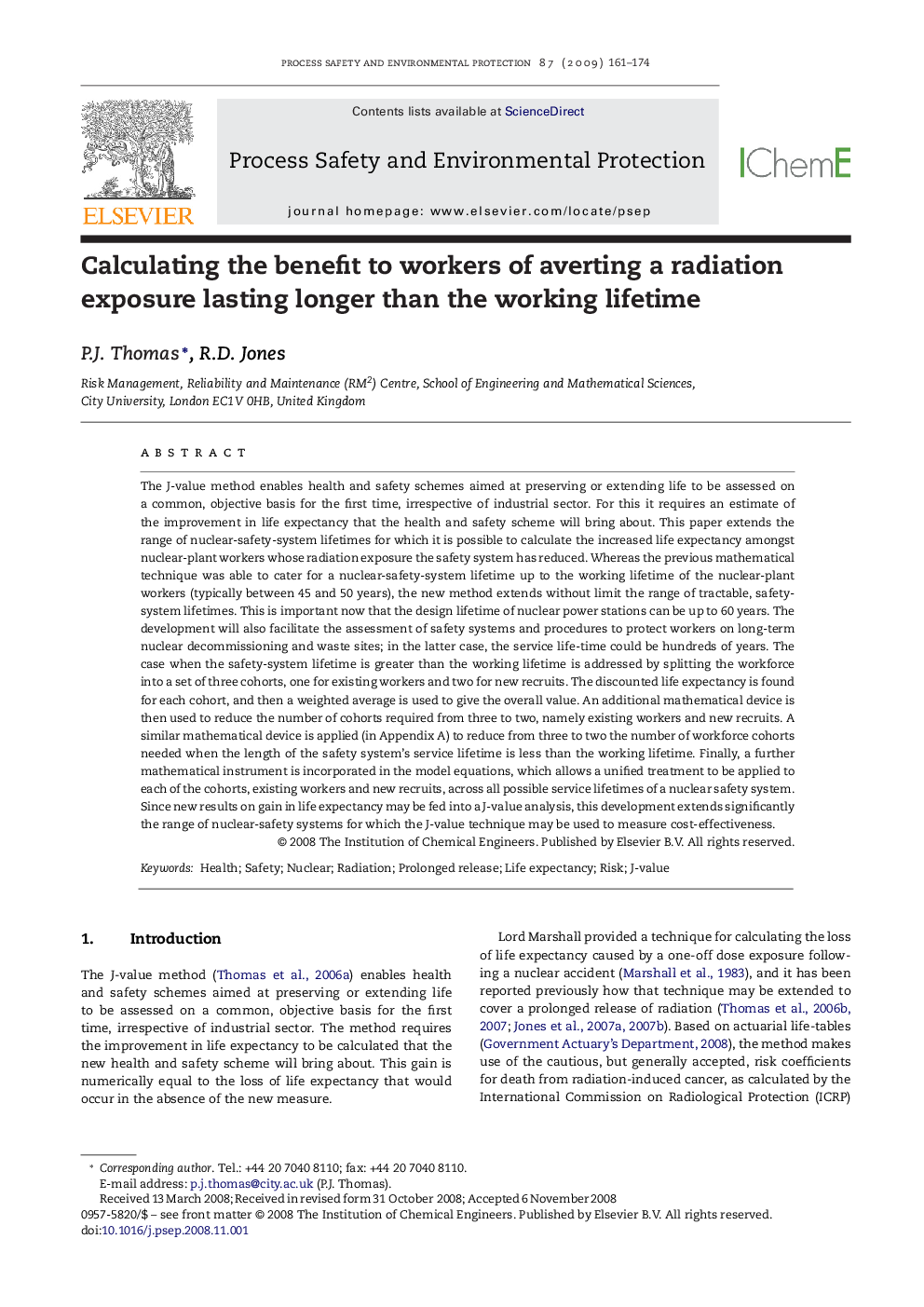| Article ID | Journal | Published Year | Pages | File Type |
|---|---|---|---|---|
| 588564 | Process Safety and Environmental Protection | 2009 | 14 Pages |
The J-value method enables health and safety schemes aimed at preserving or extending life to be assessed on a common, objective basis for the first time, irrespective of industrial sector. For this it requires an estimate of the improvement in life expectancy that the health and safety scheme will bring about. This paper extends the range of nuclear-safety-system lifetimes for which it is possible to calculate the increased life expectancy amongst nuclear-plant workers whose radiation exposure the safety system has reduced. Whereas the previous mathematical technique was able to cater for a nuclear-safety-system lifetime up to the working lifetime of the nuclear-plant workers (typically between 45 and 50 years), the new method extends without limit the range of tractable, safety-system lifetimes. This is important now that the design lifetime of nuclear power stations can be up to 60 years. The development will also facilitate the assessment of safety systems and procedures to protect workers on long-term nuclear decommissioning and waste sites; in the latter case, the service life-time could be hundreds of years. The case when the safety-system lifetime is greater than the working lifetime is addressed by splitting the workforce into a set of three cohorts, one for existing workers and two for new recruits. The discounted life expectancy is found for each cohort, and then a weighted average is used to give the overall value. An additional mathematical device is then used to reduce the number of cohorts required from three to two, namely existing workers and new recruits. A similar mathematical device is applied (in Appendix A) to reduce from three to two the number of workforce cohorts needed when the length of the safety system's service lifetime is less than the working lifetime. Finally, a further mathematical instrument is incorporated in the model equations, which allows a unified treatment to be applied to each of the cohorts, existing workers and new recruits, across all possible service lifetimes of a nuclear safety system. Since new results on gain in life expectancy may be fed into a J-value analysis, this development extends significantly the range of nuclear-safety systems for which the J-value technique may be used to measure cost-effectiveness.
